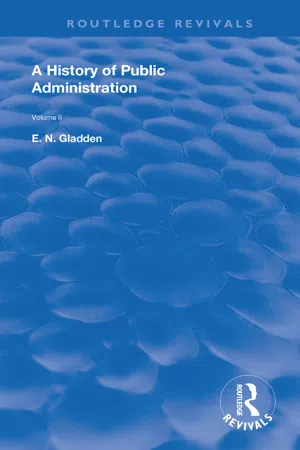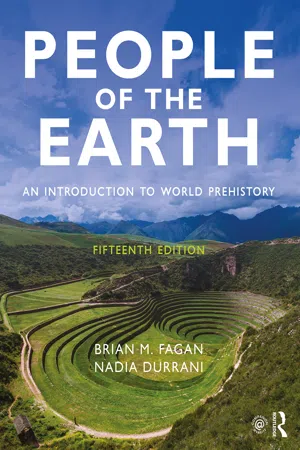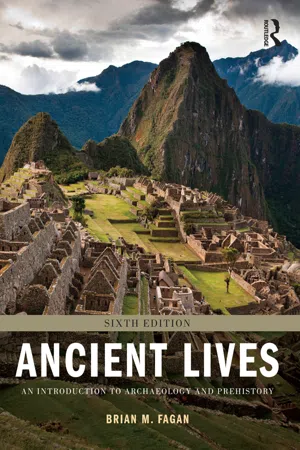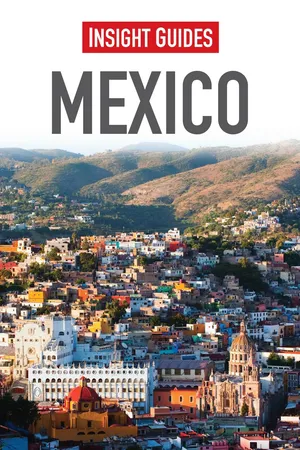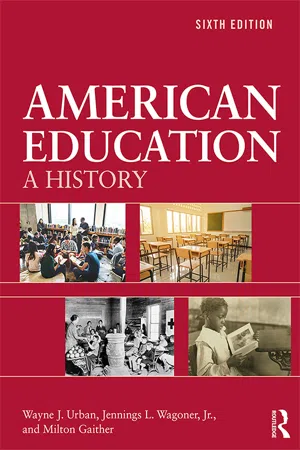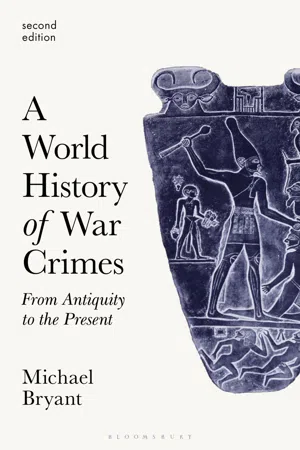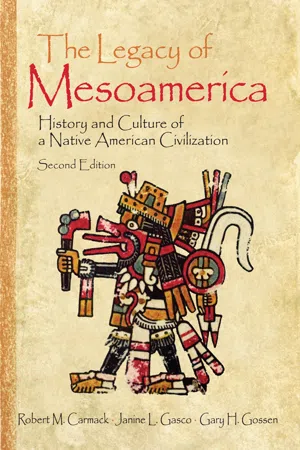History
Pre-Columbian Civilizations
Pre-Columbian civilizations refer to the advanced societies that existed in the Americas before the arrival of Christopher Columbus in 1492. These civilizations, including the Aztec, Maya, and Inca, developed complex cultures, sophisticated agricultural practices, and monumental architecture. They made significant advancements in art, astronomy, and mathematics, leaving a lasting impact on the history and culture of the Americas.
Written by Perlego with AI-assistance
Related key terms
Related key terms
1 of 4
Related key terms
1 of 3
9 Key excerpts on "Pre-Columbian Civilizations"
- eBook - ePub
A History of Public Administration
Volume II: From the Eleventh Century to the Present Day
- E.N. Gladden(Author)
- 2019(Publication Date)
- Routledge(Publisher)
Chapter 4 Early American CivilizationsDistinct civilizations had developed in Central and South America long before the date set for the beginning of the present volume. However, since their existence was not known until after the Spanish invasions of the sixteenth century of our era and earlier histories of their beginnings do not exist it would have been somewhat artificial to have dealt with them in our first volume, although in fact their beginnings go back at least to the second millennium B.C. , to a time when the Egyptians were building their pyramids, Babylon was being unified and the Minoans were still flourishing. For these earlier periods the evidence is to be gleaned from archaeological, anthropological and cultural survivals, or the oral traditions of the later Inca, Aztec and Maya peoples, whose current records were so unfortunately and misguidedly destroyed by the invading Spaniards. Nevertheless their existence is less open to challenge than that of many ancient communities of the West, for the evidence is still to be seen abundantly on all sides.The stepping-stone to the New World was Hispaniola (the island today divided between the Haiti and Dominican Republics) where the Spaniards established their own government. Christopher Columbus himself, in 1502 on his fourth voyage to the Indies, was the first European to make contact with the Mayas at Guanaja, an island off the coast of Honduras. Very quickly his presence was reported to the Aztecs of Mexico. Their priests, believing him to be the long-expected white god, prophesied the end of the world. Hernando Cortés (1485-1547), commissioned in 1518 by Velazquez, Spanish Governor of Cuba, to lead an expedition to conquer Mexico, landed on the mainland at a spot now known as Vera Cruz and, with some five hundred Spaniards, marched over the mountains to the central plateau and the magnificent Aztec capital of Tenochtitlán, situated in the centre of a lake which was subsequently drained and is today the site of Mexico City. The Emperor Montezuma, who received him with his following, was shortly taken prisoner and compelled to admit vassaldom to Spain. The warlike Aztec civilization fell and withered with hardly any resistance before the impact of outsiders, defeated not solely by Spanish fire power but partly by their own superstitious interpretation of the fate that was overwhelming them. The Mayas, occupying territory contiguous to the Aztecs, already a dying civilization, presented a less attractive prey and consequently were able to put up a longer resistance in Yucatan until 1546. In fact outlying areas continued to resist, and the Maya Empire was not finally liquidated before 1697. - eBook - ePub
People of the Earth
An Introduction to World Prehistory
- Brian M. Fagan, Nadia Durrani(Authors)
- 2018(Publication Date)
- Routledge(Publisher)
NATIVE AMERICAN CIVILIZATIONS BEFORE 2000 B.C. TO A.D. 1534PART VPassage contains an image
21 Mesoamerican Civilizations CHAPTER OUTLINE Village Farming Preclassic Peoples in Mesoamerica The Rise of Complex Society in Oaxaca Monte Albán Teotihuacán Maya Civilization The Ninth-Century Collapse The Toltecs Aztec Civilization and the Spanish ConquestB y any standards, New York lawyer turned traveler John Lloyd Stephens was a remarkable man. In 1839, he and Scottish artist Frederick Catherwood journeyed deep into the Mesoamerican rain forest, following rumors of vanished civilizations and great ruins masked by primordial jungle. They came first to the tiny modern village of Copán, where “around them lay the dark outlines of ruins shrouded by the brooding forest. The only sound that disturbed the quiet of this buried city was the noise of monkeys moving around among the tops of the trees” (Stephens, 1841: 48). While Catherwood drew the intricate hieroglyphs he had found on the stelae, Stephens tried to buy the ancient city of Copán for 50 dollars so that he could transport it block by block to New York. The deal fell through when he found he could not float the antiquities downstream. Stephens and Catherwood visited Palenque, Uxmal, Chichén Itzá, and other sites. They were the first to recognize the Maya as the builders of these great sites: “These cities . . . are not the works of people who have passed away . . . but of the same great race . . . which still clings around their ruins,” Stephens wrote (p. 222). All subsequent research into the Maya and into ancient Mesoamerican civilization has been based on his premises. Today, Maya civilization, with its intricate, recently deciphered glyphs and spectacular cities, ranks among the most fascinating in the world. As we shall see in this chapter (Table 21.1 ), its origins lie deep in the remote past. ■A reconstruction of a Maya ball game, Copán, Honduras. National Geographic Image collection. - eBook - ePub
- William H. Beezley(Author)
- 2011(Publication Date)
- Wiley-Blackwell(Publisher)
PART II The Indigenous World Before the Europeans CHAPTER SEVEN The Gods Depart: Riddles of the Rise, Fall, and Regeneration of Mesoamerica’s Indigenous Societies SUSAN KELLOGG “If this is a history class, why do I have to learn about archaeology?” This is a common student question at the start of any colonial Mexico history class. The general answer is that prehispanic peoples are a part of that history; their cultures and civilizations shaped Spanish exploration, conquest, and governance in the post-conquest era and after. There are also some specific answers: first, the environments that Spaniards found had already been shaped in profound ways by native peoples; they were differentiated in terms of ethnicity, class, and gender, and indigenous forms of difference influenced the development of colonial society. The cultures and civilizations encountered by Spaniards were themselves the products of thousands of years of development and change, their own longue dureé, a point first made by Eric Wolf in his classic 1959 book, Sons of the Shaking Earth. This chapter treats the history of Mesoamerica’s indigenous peoples before 1519. Drawing on both archaeological and ethnohistoric investigation by a multitude of scholars, it dispenses with a concept often used to describe this long period time, that of “prehistory” (defined as the period before the appearance of writing), since writing was an ancient practice made use of by many indigenous groups. 1 The chapter draws especially on recent archaeological writings and argues that several fundamental characteristics of prehispanic political economy and spirituality developed early and became highly elaborated by the time Spaniards arrived - eBook - ePub
Ancient Lives
An Introduction to Archaeology and Prehistory
- Brian M. Fagan(Author)
- 2016(Publication Date)
- Routledge(Publisher)
Part VIAncient AmericaNative American Civilizations
Native American civilizations emerged in the Andes and Mesoamerica at more or less the same time. Mesoamerican civilization developed rapidly after 1200 B.C. , culminating in the Maya civilization of the lowlands, and Teotihuacán, the Toltec, and the Aztec in the highlands. More complex societies appeared in coastal Peru after 3000 b.c. During the past 2,000 years, two poles of civilization flourished, one on the north coast of Peru, the other in the highlands around Lake Titicaca. The Inca unified them into a single vast empire, Tawantinsuyu, “the Land of the Four Quarters.”Passage contains an image
14Maize, Pueblos, and Earthwork Builders
Chapter Outline North America after First Settlement The Story of MaizeThe North American Southwest (300 B.C. to Modern Times)Earthwork Builders in Eastern North America (2000 B.C. to A.D. 1650)White House Ruins, Canyon de Chelly, Arizona, c. A.D. 1200.(Robert Miramontes/Thinkstock)In 1879, Frank Cushing, a young anthropologist from the Smithsonian Institution, arrived at Zuñi pueblo in the American Southwest on a mule. A pall of wood smoke covered the town as the Sun set behind the settlement. The mud-brick walls melted into the landscape. He wrote, “It seemed still a little island of mesas, one upon the other, reared from a sea of sand, in mock rivalry of the surrounding grander mesas of Nature’s rearing” (Cushing 1979, 45). A pioneer of the anthropological method known as participant observation, Cushing lived among the Zuñi for four-and-a-half years, learning their language and recording their traditional life in great detail.After three years, the Zuñi initiated him into the secret Priesthood of the Bow. Cushing now dressed in Indian clothing. He spent many hours sitting in kivas - eBook - ePub
- Insight Guides(Author)
- 0(Publication Date)
- Insight(Publisher)
Pre-Hispanic CivilizationThe Maya and Aztecs are the best-known cultures, but ancient Mexico contained a remarkable array of diverse, complex peoples.According to archeological research, Mexico has been inhabited for around 20,000 years. It all began in Siberia, with ancient hunter-gatherer peoples crossing the Bering Straits in search of food during the Ice Ages. From Alaska they moved south down the coast, and eventually reached Mexico and Central and South AmericaSome time around 9000–7000 BC, people in what is now Mexico first began to use a crude stone implement to grind wild corn into maize flour. This was the forerunner of the metate , the slab upon which rural Mexicans still grind corn today. By 5000 BC ancient Mexicans had begun to grow maize and beans, and around 2000 BC they began to mix lime powder with corn to create the much more nutritious nixtamal flour, the essential ingredient for making corn tortillas. These have been the staples of the Mexican diet ever since.The Mesoamerican timelineStatue of a jaguar headdress from Monte Albán. Mockford & Bonetti/Apa PublicationsMesoamerica is the term commonly used for the cultural region that in pre-Columbian times extended through Mexico, Guatemala, and much of Central America. Within it there were two main “hubs,” the Central Highlands and the southern Maya region, from Guatemala up into Yucatán, with many “offshoots” such as the valleys of Oaxaca. Our knowledge of Mesoamerican civilizations is continually changing and expanding, and has been transformed by discoveries in the last 30 or 40 yearsA common Mesoamerican historical division into “eras” has been developed. Very broadly, the first complex cultures emerged in what is known as the “Preclassic” era, from about 1600 to 300 BC; this was followed by a transitional period usually called the “Late Preclassic,” from about 300 BC to AD 250, when the growth of major cultures such as Teotihuacán or the southern Maya accelerated. The Classic era of Mesoamerica, from about AD 250 to 800, saw these civilizations reach their greatest wealth and extent, but was followed by a period often called the “Great Collapse,” when some cultures, above all the southern Maya, went into rapid decline, for reasons that are still continually debated. In the “Postclassic,” from about 1000 to the Spanish Conquest, the Maya revived on a more limited scale in Yucatán, while cultures proliferated in the Central Highlands, culminating in the empire of the Aztecs. - eBook - ePub
American Education
A History
- Wayne J. Urban, Jennings L. Wagoner, Jr., Milton Gaither(Authors)
- 2019(Publication Date)
- Routledge(Publisher)
This European dominance should not blind us to the fact that education had been happening for millennia in North America by the time small bands of Englishmen dropped anchor along the eastern coast of the continent in the early seventeenth century. It long antedated the Italian, Spanish, Portuguese, Dutch, French explorers, missionaries, and traders who brought European learning, culture, religion, technologies, and diseases with them as they penetrated the vast American continent. Well-established societies and rich cultural legacies existed long before anyone “discovered” anyone else, as is dramatically exemplified by the great civilizations of the Aztecs, Incas, and Mayas.Cultural Diversity in Pre-Columbian America
Until recent years, archaeological scholarship has held that the first inhabitants of the North American continent crossed over the Bering Land Bridge around 13,000 BC. Today that notion is contested. The most current research findings suggest that Native Americans were here far longer and in greater numbers than previously thought. Archaeological digs in Chile over the past few years have yielded evidence of artifacts dating back more than 30,000 years. In 2003, archaeologists discovered ancient seeds from cultivated squashes in coastal Ecuador that may be older than any other agricultural remains thus far identified. It now appears that the Euroasians who traversed across the 55-mile-wide Bering corridor some 13,000 years ago may have constituted the most recent of three such migrations. However far back in time “Native” American origins may be, before their encounter with Europeans some 500 years ago, these people shared the land only with the animals that were native to the Western Hemisphere or that, like their own ancestors, had migrated from the steppes of Asia and Siberia before the last glacial melt turned the Bering Land Bridge into the Bering Strait.1As the original Americans spread across the continent and southward into Central and South America, they developed a variety of indigenous societies. Some societies remained hunting-and-gathering communities, others evolved into large and complex agrarian settlements, and still others went back-and-forth between settled and nomadic life due to changes in climate, hunting conditions, or seasonal variation. During the period when English barons were securing limited rights under the terms of the Magna Carta (1215), the Cahokia federation was supporting a “city” with a population of some 16,000 inhabitants at the confluence of the Illinois, Mississippi, and Missouri rivers. Today, within sight of the Gateway Arch and skyscrapers of downtown St. Louis, Missouri, one can still walk to the top of Monk’s Mound, a terraced 100-foot-high ceremonial site that was the centerpiece of this Cahokian city that flourished five centuries before Columbus found his way to the new world. Other tribal groups left their mark with earthworks by the thousands spread from southern Canada and the Great Plains to the Atlantic coast and the Gulf of Mexico. While most of these mounds took the form of rounded pyramids, some were sculpted into the shapes of gigantic birds, lizards, bears, and alligators with long tails. In southern Ohio the remains of a 1,330-foot earthen serpent are still visible.2 - eBook - ePub
A World History of War Crimes
From Antiquity to the Present
- Michael S. Bryant(Author)
- 2021(Publication Date)
- Bloomsbury Academic(Publisher)
CHAPTER 2 THE LAW OF WAR IN PRE-COLUMBIAN AMERICA With respect to the civilizations covered in Chapter 1, none was hermetically sealed off from influence by others. At some point in their histories they were all brought into conjunction with one another, whether by means of trade routes linking eastern and western entrepots or the military conquests of the Assyrians and Babylonians, the Persians, Alexander the Great, Greek colonists, and the Roman legions. Such was not the case with the civilizations that are the topic of this chapter. Not until the voyages of Christopher Columbus and their ruinous aftermath were any of them—so far as evidence tells us—exposed to the cultures of Europe, the Near East, or Asia. They thus present an intriguing and revealing glimpse of sophisticated peoples who, because of their geographical position, were able to develop apart from the civilizations of Eurasia. Although no transformative watershed occurred during the first millennium BCE in the ancient Americas as it did in Eurasia to mark a cognitive boundary between the socio-political worlds and the gods, Pre-Columbian Civilizations adhered to a Law of War entirely of their own stamp, one that bears astonishing similarities with but also impressive differences from their Eurasian counterparts. Mesoamerica The Maya Kings as Shamans To get at Mayan understandings of conflict, we must first familiarize ourselves with their cosmology, for warfare and the laws underlying it are the tendrils of Mayan religion. As Mesoamerican scholars Linda Schele and David Freidel have argued, 1 an understanding of the Maya can be acquired only with the knowledge that “the Maya codified their shared model of reality through religion and ritual rather than economics.” For modern Westerners whose frame of reality is materialist and economic, a culture that primarily construes the world in non-material spiritual categories is so exotic as to be nearly incomprehensible - eBook - ePub
The Legacy of Mesoamerica
History and Culture of a Native American Civilization
- Robert M. Carmack, Janine L. Gasco, Gary H. Gossen(Authors)
- 2016(Publication Date)
- Routledge(Publisher)
2 , Mesoamerican civilization was forged by processes of change among many different peoples over a time span of millennia. The developments listed below stand out as the key features that shaped the course of Mesoamerican history.First, the domestication of maize provided a secure nutritional and agricultural foundation for the emergence of Mesoamerican civilization.Second, the rise of settled village life and the spread of early religious concepts brought about the coalescence of Mesoamerican culture in the Formative period. Third, the development of state-level societies characterized by writing, cities, social stratification, and powerful kings signaled the development of truly complex civilizations in the Classic period.Fourth and finally, the Postclassic period witnessed the continuing political and economic development of these societies, particularly the emergence of smaller polities (city-states) in which markets and commercial forces came to the fore as dominant institutions.By the time of the arrival of Cortés and the Spanish conquerors in 1519, Mesoamerica was a distinct cultural tradition whose heritage shaped the continuing historical development of the area in the colonial, national, and modern epochs. Before we turn to these later developments, however, it will be important to explore the Late Postclassic (Contact period) Mesoamerican world in terms of the ways that it was organized and integrated into a world-system at the time of the Spanish invasion. That is the subject of Chapter 3 to follow.SUGGESTED READINGS
Berdan, Frances F . 1985 The Aztecs of Central Mexico: An Imperial Society . New York: Holt, Rinehart and Winston.Berdan, Frances F. , Richard E. Blanton, Elizabeth H. Boone, Mary G. Hodge , and Michael E. Smith 1996 Aztec Imperial Strategies . Washington, D.C.: Dumbarton Oaks.Boone, Elizabeth Hill 2000 Stories in Red and Black: Pictorial Histories of the Aztecs and Mixtecs . Austin: University of Texas Press.Byland, Bruce E. , and John M. D. Pohl 1994 In the Realm of 8 Deer: The Archaeology of the Mixtec Codices - eBook - ePub
People of the Earth
An Introduction to World Prehistory
- Brian Fagan, Nadia Durrani(Authors)
- 2023(Publication Date)
- Routledge(Publisher)
By AD 1680, the Indian population of the Aztec heartland had been reduced from approximately 1.2 million to some 70,000—a decimation resulting from war, slavery, disease, overwork and exploitation, famine, and malnutrition. Mesoamerica lost between 85 and 95 percent of its indigenous population during that 160-year period. Only a few fragments of the fabulous Mesoamerican cultural tradition survived into modern times, and the Native American population faced a new and uncertain chapter in its long history.Summary
- The Preclassic period of the Mesoamerican past lasted from approximately 2000 BC to AD 250, a time of major culture change in both lowlands and highlands.
- Sedentary villages traded with each other in raw materials and exotic objects. These exchange networks became increasingly complex and eventually came under the monopolistic control of larger villages.
- Increasing social complexity went hand in hand with the appearance of the first public buildings and the evidence of social stratification.
- These developments are well chronicled in the Valley of Oaxaca and in the Olmec culture of the lowlands, which flourished from approximately 1500 to 500 BC. Olmec art styles and religious beliefs were among those that spread widely over lowlands and highlands during the late Preclassic period.
- Preclassic cultural developments culminated in the highlands in a number of great cities, among them Monte Albán and Teotihuacán. Teotihuacán had collapsed by approximately AD 700, probably as a result of warfare with other rival states in the highlands. Drought may also have played a role in its demise.
- Religious ideologies, ritual organization, and extensive trading networks were key factors in the development of Maya society in the lowlands after 1000 BC.
- Classic Maya state flourished from AD 250 to 900 and consisted of an ever-changing patchwork of competing states. Maya glyphs show that Maya state was far from uniform. Religious beliefs rather than political or economic interests unified the Maya. Until AD 600, the largest states were in northeast Petén, now in Guatemala, with a multicenter polity headed by the “Sky” rulers of Tikal.
Index pages curate the most relevant extracts from our library of academic textbooks. They’ve been created using an in-house natural language model (NLM), each adding context and meaning to key research topics.
Explore more topic indexes
Explore more topic indexes
1 of 6
Explore more topic indexes
1 of 4
